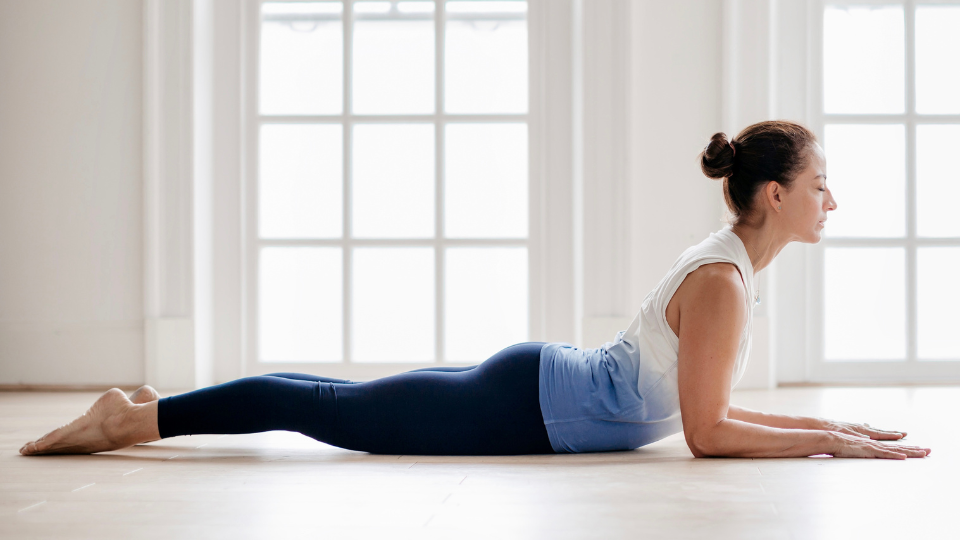
Perimenopause and menopause can be a time of real empowerment for women, we just need practical help and support as to how to tap into that power.
“Menopause is an invitation to get to know ourselves better and upgrade our physical, mental and emotional selves to the best version possible.”
~ Gabriella Espinosa
Yoga is a tool we can use to understand and manage the typical symptoms associated with menopause such as stress, physical pain, mood swings or trouble sleeping. As women transition through menopause they may need different yoga practices in different moments. There is Yoga for rest and restoration, yoga to release tension and meno-rage, and yoga to reenergise, rebuild strength and bone density. Part of a woman’s’ journey through menopause is becoming better acquainted with her body and fine tuning her intuitive skills so it is easier to understand clearer what she needs when.
As well as improving the physical challenges that menopause brings, yoga can also reduce emotional symptoms such as stress, anxiety and overwhelm. For example restorative yoga is very calming for the nervous system as you stay in a pose for 5-10 minutes, held and supported by the props around you. Yoga Nidra or Sound Healing can help to calm the mind and improve the quality of sleep, especially if theres a tendency to wake up in the night and struggle to fall back to sleep.
There are many different ways Yoga can be supportive through Menopause and also any other big transitions and changes that life throws at us. Yoga can also support with other symptoms that are also associated with getting older in general, such as muscle loss or degeneration of joints and mobility.
This is a complete guide to understand how best to utilise Yoga for menopause? What are the benefits of practicing yoga whilst going through menopause? What are the best classes for maintaining bone and muscular strength as your hormones change? How your yoga practice can help you to be more self loving and compassionate as your body and mind adjust to menopause?
‘Within every woman there is a wild and natural creature, a powerful force filled with good instincts, passionate creativity, and ageless knowing’
~ Clarissa Pinkola Estes
What is Menopause?
(Menopause) is a bio-psycho-social-spiritual journey. Where you take that journey is up to you.
Petra Coveney
Menopause is simply a medical term that derives from ancient Greek and means the ‘pause’ in your menses (menstruation), or the end of the reproductive stage of your life. There is also THE Menopause which is an umbrella term for the three stages that women go through; perimenopause, menopause and post menopause
Really the menopause is more than simply the end of reproductive years and changes in your hormones. It can be a true Awakening. As Petra Coveny says it can be a ’reconnection to your SELF and an opportunity for self-growth’.
Rather than thinking life stops after menopause, it is a re-framing of the narrative that we have been told. Rather, this time can be exciting, sensual, empowering, and an opportunity to have your voice heard!
Having said that, it is a time where women are going through big changes physically and emotionally and it is important to make time for a meno-PAUSE. This is time out of your daily life to focus on your health and wellbeing. Taking time to acknowledge the shifts and changes you are going through and rather than just pushing through you practice self-care.
“Wrap yourself in kindness and self-compassion. My mantra is to ‘Nurture and Nourish’ yourself with whatever feels supportive for you.”
Petra Coveney
Further Reading:
- What is Menopause? by Petra
- Help! Menopause Is Here. What Do I Do? by Alexandra Pope
- Yoga and Perimenopause
- Yoga Post Menopause
Why do Yoga in Menopause?
Yoga for menopause offers guidance far beyond just physical yoga. It can also offer psychological and emotional support for symptoms that arise during menopause. Research shows that one of the triggers for increased menopause symptoms is stress, this can be both internal and external stress factors. Yoga is proven to reduce stress levels, bring us into the calming parasympathetic nervous system, and balance the hormones.
Yoga is a combination of yoga breathing, yoga practices and yoga meditation, and all these combine to calm our nervous system. We live in a modern-westernised world that is constantly stimulating us, and this is the main reason yoga is an important tool through menopause. Yoga helps us to navigate the menopause symptoms, it slows down our system, and helps us befriend and listen to our body as we go through transition and change. Yoga helps us learn how to deeply rest, to understand how to move in ways that boost our physical, mental and emotional health, and also how to listen to our intuition more. (Read more about mental health, menopause and midlife)
Grabara and Szopa‘s study of 56 women between 50 to 79 years who attended a 20-week yoga retreat focused on spinal mobility. At the end the participants demonstrated greater spinal mobility, more overall back strength, and more strength in their abdominal oblique muscles.
Through the practice of yoga, the inevitable changes and transition (physical and emotional) can be navigated with self-acceptance, grace, dignity and humour.
Read more about yoga for stress and anxiety in this complete guide
Yoga for menopause can:
- Reduce stress and calm the nervous system
- Relieve menopausal symptoms, such as hot flashes, joint and muscle aches.
- Release phsyical stress and tension
- Balance your moods and emotions, such as meno-rage, anxiety, low mood.
- Restore energy that can be caused by insomnia and fatigue.
- Boost and invigorate slow metabolism and boost heart health
- Strengthen muscles and build bone density
How Yoga Supports Ageing:
Often the symptoms of menopause are intertwined with the ‘normal’ side effects of ageing. According to research from Madhivanan et al, “yoga appears to have a wide range of benefits including increased mobility; reduced risk for slip and fall; protection against cognitive decline; increased flexibility, strength, and balance; and improved sleep and mental well-being”.
5 ways Yoga helps as you get older:
- Maintaining muscle mass – as we age our muscle mass naturally decreases. Doing body weight work that yoga offers can strengthen our muscles and strength.
- Strengthen bones – this is a big one for women going through menopause as oestrogen levels reduce and bones weaken (read more here). Building strength, introducing body weight exercises, along with some impact ((Barre classes!)) can increase bone density and reduce the risk of fractures.
- Joint flexibility – As we age often our joints get stiffer and some might develop arthritic symptoms. Doing regular yoga and movement helps the joints stay mobile, flexible and nourished.
- Weight control – As our hormones adapt through menopause we may find we are holding weight in new areas! As you move, strengthen and gain muscle, your body begins to burn calories easier, thereby making weight more manageable.
- Improved balance – Stronger legs, more proprioception, and agility can improve balance even as you age. This reduces falls and injuries.
Yoga for Menopause: The 5 BEST Yoga Classes for Menopause
1. Menopause yoga: Finding Ease with Petra Coveney

2. Cooling & Calming practice with Gabriella Espinosa
3. Menopause Yoga: Befriending Your Body with Petra Coveney
4. Yoga for healthy bones and stability with Gabriella Espinosa

5. Yoga Nidra to Cool & Relax with Uma Dinsmore Tuli

Yoga for Menopause: Finding Ease
Alexandra pope
In the world we live in we are continually being put back into flight or flight mode, and our sympathetic nervous system is being triggered. This is why the symptoms of anxiety are so high for many people. Stress can exasperate the symptoms of menopause. Whilst going through menopause there are many internal shifts changes happening alongside the external life triggers. These internal changes are triggering a sympathetic responses in our nervous system and demanding lots of the adrenal glands.
This process happens the most during peri-menopause, whilst going through the biggest hormonal shifts. This is why it is important to rest and restore particularly during this phase of menopause. As the adrenal glands are working hard to produce another form of Oestrogen (oestrone) we want to do our best to relieve them from the added demand of stress and cortisol. Menopause Yoga can support this balancing of our endocrine system by reducing stress levels, releasing stress from the muscles and body with restorative poses and offering us introspection and a calming of the mind from mental stressors.
In the end it all comes down to stress and how we manage our stress levels. The best thing we can do to support our endocrine system, balance our hormones, and relieve menopause symptoms, is to reduce stress and be more conscious of what we put into your body in all different ways.
Read:
- Yoga poses for Menopause
- Nutrition for Menopause
- Nutritional Support for Menopause by Lindsey Whistler
- The Best foods for Menopause
- Empowering Menopause
- Recipes from Gabriella
- A Recipe for Perimenopause
4 Gentle Yoga Poses for Stress Relief
1. Legs up the wall – viprita karani
Props needed: 2 x blankets, bolster, a strap, and eye pillow.
Set up:
- Move the mat to the wall
- Spread a blanket wide over all of the mat for a soft and warm ground underneath you.
- Loop the strap/belt and step the legs through. Bring the loop up to your thighs and tighten until the legs are hip distance apart.
- Sit on the bolster sideways and lower down to one side. Raise both legs up, and shift your hips so the back of your pelvis rests on the bolster. (If the bolster feels too high then you can replace the bolster with a folded blanket.)
- The belt keeps the legs stable and you can relax.
- Fold the excess blanket over your head and ears – tuck it in.
- Finally, place your eye pillow over your eyes. Rest your arms and hands where you are comfortable.
Here the legs are raised above the heart and this draws the blood supply back to the heart. This slows the heart rate and blood pressure and creates a sense of relaxation.
This pose is calming for your nervous system. By covering the eyes and ears covered we reduce some of the stimulus and sounds from the outside world.
2. Supported Forward Fold
Props: Chair and blanket
Set up: Prepare a chair with a blanket on the seat and place it in front of you.
- With the feet hip distance apart place your hands on your hips.
- Keep the spine long and slowly hinge forwards (bend the knees if you need)
- Rest the forehead onto the chair.
- Hands can rest on the chair or hold onto the ankles
- Lift the kneecaps and hug the thigh muscles to the bones. Shift the weight slightly forwards into the balls of the feet.
Keep the face soft and allow the breath to flow easily. As you observe the breath feel the cooling and calming sensation of resting forwards with the support of the chair.
3. Supported Childs Pose

Props: A bolster, 2 blocks, 2 cushions or blankets and an eye pillow
Set up:
- Place one block upright at the top of the mat, the other block lengthways a hands distance from the top of the block.
- Place the bolster at an angle (and stable) over the blocks.
- Bring the tip of the bolster between the thighs and slowly lower down and rest belly and chest onto the bolster.
- Turn the head to one side and after 1-2 minutes turn the head to the other side.
Allow the front of the body release onto the bolster and hands can wrap round and hold the front block. Release into the support of the bolster and feel the movement of the diaphragm as you breathe.
4. Supported Bridge Pose

Props: 2 blocks or a big bolster (whatever you need to create hight
Set Up:
- Lift the hips and slide the blocks under the sacrum
- See what height works best for you and adjust accordingly
- Keep the feet hip distance apart and knees on top of ankles
- Turn the palms face up to draw the shoulders down
- The weight of the sacrum is heavy onto the block
Make sure you are comfortable, close the eyes, calm the breath. Expand across the chest and shoulders and let go and melt into the support beneath you.
Taking time to open the upper chest can feel good when you’re overwhelmed or low energy. It is restorative back bend which means you can access the chest opening without too much muscular action.
Can yoga help reduce hot flashes?
Yes! Hot flashes can be due to many factors. Of course the changing hormone levels in the body causes changes in body temperatures, but there are also cultural and external stress factors at play.
Taking care of what food we put into the body, reducing caffeine and alcohol, and sticking to cooling foods can reduce the intensity of hot flashes (read more about the Best Foods for Menopause).
Challenging and addressing cultural perspectives that sweating is wrong or shameful, or that women must apologise for their rage, can also help women find relief from symptoms too. In the Menopause for Modern Life Course Alexandra Pope talks about how ‘at its heart menopause is a journey to freedom. The freedom that comes from truly recognising and accepting yourself. It’s a process of making peace with who you are and deeply relishing what you have to give. It’s a homecoming.’
It has also been proven that if you slow down the breath, with calming mantras and gentle thoughts then the hot flash symptoms ease.
In Yoga for Menopause we try to relax the body because tension generates heat. Our thoughts create emotions that are manifested in our bodies. Heated emotions can trigger or exacerbate hot flashes, so calming your mind can help cool and reduce the sensation of physical heat.
We use a combination of mindfulness, breathwork, yoga and cultural/social awareness to reduce the physical and emotional stressors that contribute to a worsening of hot flashes.
Read: Menorage and Hot Flushes by Petra Coveney and Eliminate Hot Flushes by Barbara Warren AND Five tools to Help Reduce Hot Flashes
Practice: Love Yourself First with Lucy McCarthy
Yoga for Menopause: 3 Cooling Practices
1. Reclining Bound Angle – Supta Badha konasana

Props: Bolster, 2 blocks, 2 cushions or blankets and an eye pillow
Set up:
- Place one block upright at the top of the mat, the other block lengthways a hands distance from the top of the block.
- Place the bolster at an angle (and stable) over the blocks.
- Sit in front of the bolster and bring the soles of the feet together. Place the blankets under your thighs for support
- Slowly recline over the bolster (adjust if you need) and place the eye pillow over your eyes or forehead. Resting arms by the side of the body.
- Notice breath and soften and lengthen it. Allow yourself to relax completely. Welcome the sensation of rest and relaxation.
Stay here for 5-10 minutes
2. A Hot Flush Remedy

This is a simple visualisation exercise to help to manage hot flushes. The whole class is one simple pose, breathing deeply whilst lying in a constructive rest position.
This can be done any time you might be experiencing uncomfortable feelings of heat.
Includes:
- The Hot Flush Wave
- Ocean breathing
- 3-part breath
By practicing this daily it can help to reduce stress, whilst also develops the simple skills for managing hot flushes. The idea is to allow the heat to flow calmly, rather than resisting the heat and causing more discomfort and friction.
3. Alternate Nostril Breathing – A cooling and calming breath
Props: Bolster, blanket, cushions (anything necessary to sit comfortably)
- Sit comfortably
- Slow down your exhalation (lengthening the exhale calms the mind)
- Take your dominant hand and place the first two fingers between your eyebrows. Your thumb rest on your nostril, the ring finger on the other nostril.
- Breathe through both nostrils. Then close the right nostril and breathe only through the left. Close the left nostril and breath only through the right.
- Breathe in through the right, then out the left. In through the left and then out through the right.
- Slow down the breath by adding a pause at the top or bottom of the breath.
Continue cycling through the breath for 5-10 rounds, then allow breath to return to a natural rhythm and observe how you feel.
Yoga for Menopause: Finding Strength
Gabriella Espinoza
As we move to the later stages of menopause, the emotions level out and the hormones change less rapidly. However, the body may not feel as strong as it once did before. It might have felt that changes were out of your control and taking some element of control back through physical strengthening practices can feel empowering.
Working on our physical strength during menopause will support us with the inevitable physical challenges that arise as a combination of ageing and menopause. As hormone levels change it is common to experiencing a weakening of the bones dues to reduced Oestrogen and also changes in the strength of the pelvic floor and other muscles and organs as a result. Conditions like Osteoporosis become common.
How Can Yoga Help?
A seminal 10 year pilot study of 202 women with osteoporosis showed improved bone density after completing a program of 12 assigned yoga poses practiced for 12 minutes daily. Another review found that yoga is as effective or better than other forms of exercise at improving muscle strength and flexibility. Founder of the study, Dr Loren Fishman explains that bone forming proteins synthesise after 10 seconds of stimulating pressure on the bone, so holding yoga poses for at least this long and gradually extending the hold of poses to 30 seconds prove beneficial to strengthening bone.
It can feel challenging to accept these physical changes, but as you can see, the answer is not to take the body for granted but rather, dedicate time to strengthening this new and evolving body. Building more physical strength helps us to feel more empowered and in control through this stage and in post menopause. Read more about the importance of building bone strength in menopause.
At the same time, learning something new challenges the brain and exercise also stimulates endorphins that can improve the state of mind (another thing that suffers with all the changes and challenges of menopause).
Why is strength training important in menopause?
- Maintains muscular strength
- Improves bone density – ‘When you’re bearing weight through feet and hands… you are applying stimulating pressure to bone which activates bone strengthening cells’.
- Proven to have a positive effect on our mental health by releasing endorphins and can also improve our body image so also confidence.
- Reduces body pains
- Improves sleep
- Builds resilience
- It improves your heart health, circulation, and respiratory health.
- Improves posture, balance, and strength and as a result can prevent injury. E.g. Training strengthening the glutes
Yoga for Menopause: 3 Yoga Poses to Build Strength
Your strength is how calmly, quietly and peacefully you face life
Yogi Bhajan
1. Dolphin Pose

Dolphin is an inversion that is great for the strength and mobility in your shoulders and upper back.
How to do it: Start in forearm plank, keeping the abdominal strong and shoulders over your elbows. Walk your feet in and lift your hips to enter dolphin pose. Remember to keep your elbows shoulder-width apart, and shoulders open.
Modify: keep a block between your hands so your hands and forearms stay parallel. If you don’t have the mobility in your shoulders you can just build strength and hold forearm plank. You can lower to your knees for support.
Up level: Try Dolphin push ups – moving your body from forearm plank back to dolphin pose and repeat 5-10 times
Forrest yoga is an amazing practice for building all over strength – also try this class Release and Transform with Ana Forrest
2. Chair Pose (Utkatasana)

Chair pose strengthens our legs and arms. A much more accessible yoga for strength pose.
How to do it: From a standing position, step your feet hip distance apart. Bend the knees and hinge forward slightly at the hips. Keep the weight toward the heel of the foot and sweep your arms forward alongside the ears. Keep the arms strong and try to hold chair for 5-10 breaths.
Up level: Try different arm variations, or try lifting one foot from the ground, or simply sit a little deeper into chair pose.
Modify: Decrease the bend in the knees and stand slightly taller. Try with a block between your thighs so you have something between your thighs to help you stabilise the legs.
If you want the pose broken down more you can watch the Utkatasana Tutorial with Andrew McGonigle
3. Side Plank Pose (Vasisthasana)
Try this Pilates-inspired flow with Vanessa to strengthen and lengthen the side body. It is lovely strong workout especially for the lateral abdominals and glutes. These tend to be muscles that are weakened from more sedentary lifestyles, yet very necessary for the health of our spines. Strengthening the side body with poses like side plank can help us to feel more spacious in our joints and balanced in our posture too.
As it says, this is a side version of plank… and it builds strength in the side body.
How to do it: From plank, transition the weight onto one arm and rotate the feet to the opposite side. Stack the legs and feet. Keep your chest open and try not to collapse your shoulder.
Up level: Lift the upper leg. Also try to rotate from plank to side plank, back to plank, and then the other side.
Modify: it can feel a lot in the supporting hand/wrist/shoulder – lower the knee of the underneath leg and use it for support. If you have wrist pain, another option is to do side plank on your forearm instead of your hand. You might need an optional blanket to pad your knees.
- If you have more fire in you and want a challenge then have a go with: Mandala Power Yoga: Fiery Flanks – Expect lots of lovely twists, plank variations and inversions.
- Other Pilates for strength classes with Vanessa include Pilates for Strength: Back Mobility
Aside from yoga, what else can I do to stay strong and mobile through menopause?
Barre
Barre is a movement practice that incorporates ballet, yoga and pilates all together. It uses small controlled pulsing movements and focuses on form, alignment and core engagement.
Pilates
Pilates has a strong body-mind connection and focuses on moving the body with control, specifically focused on core stability. Both Pilates and Barre are great practices to build strength incrementally without impact.

Try the Course: Barre and Pilates for Building strength: Build strength, flexibility, balance, stability and endurance, all whilst reducing stress! Suitable for all levels, although some classes are tough – take these at your own pace, listening to your body’s wisdom and return to classes as many times as you need to.
Try this class: Barre for Total Body Strength with Amy Holly
Read: Strong Bones by Gabriella Espinosa
Yoga for Menopause: Befriending your Body & Feelings
Transition can feel overwhelming, which makes it super important to have the tools to stay present, calm, and feel strong enough to face the challenges of change.
Going through menopause can feel like you no longer recognise your body. There may be a dip in energy, disrupted sleep, brain fog or hot flash or two. The initial stage can feel especially challenging, but when we lean in and listen, our body is telling us what we need.
Psychotherapist, Kelly Hearn, shares how menopause affects mental health and the importance of understanding and accept the changes we face.
Class recommendation: Feeling Grounded in Uncertain Times with Nikita Akilapa
Top tip: Things are changing! To negotiate that change with ease, it’s vital that you make peace with your body, prioritise its needs. It’s time to befriend your body. And in that act you are also befriending yourself.
Menopause can also be a vulnerable and exposing time. Strong feelings and emotions often come up, including anger, rage and grief. This is a time to make space for these feelings and allow them to move through, holding onto the feelings can further exasperate the symptoms of menopause.
Class recommendation: Gentle Yoga for Emotional Release with Gabriella Espinosa
Top tip: Alexandra Pop shares that whilst strong feelings can come up at menopause, these feelings are meaningful, and not to be ignored or repressed. In truth they can’t be repressed now. It’s necessary to have time and safe spaces to allow yourself to experience these feelings. They will lead you to what you need and need to do.
What Courses can I do to Support me through Menopause?
1. Menopause for Modern Life – A Course
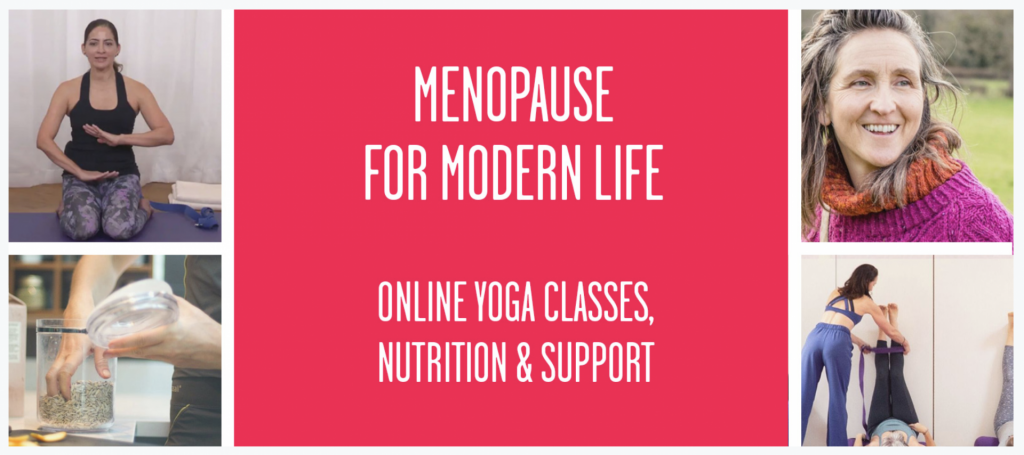
This yoga for menopause course brings together specialist contributors and offers yoga classes, audio interviews, facts, guidance and community. The course is suitable for anyone interested in understanding more about menopause, women going through perimenopause and menopause.
Includes:
- Over 30 yoga and movement based classes for all experience levels
- Talks, discussions and interviews
- Informative in-depth articles
- Facts, practical guidance and support
- A facebook group to share your experiences with others going through the same process.
2. Qigong Balance Series with Mimi Kuo-Deemer
Qigong is a wonderful alternative to yoga for menopause. It is a useful practice whilst going through physical and emotional challenges of menopause. Try the Qigong Balance Series to find structural, energetic and emotional balance and use these as tools to build standing strength and stability in your body. Also take these tools into your life as you move through changes and challenges.
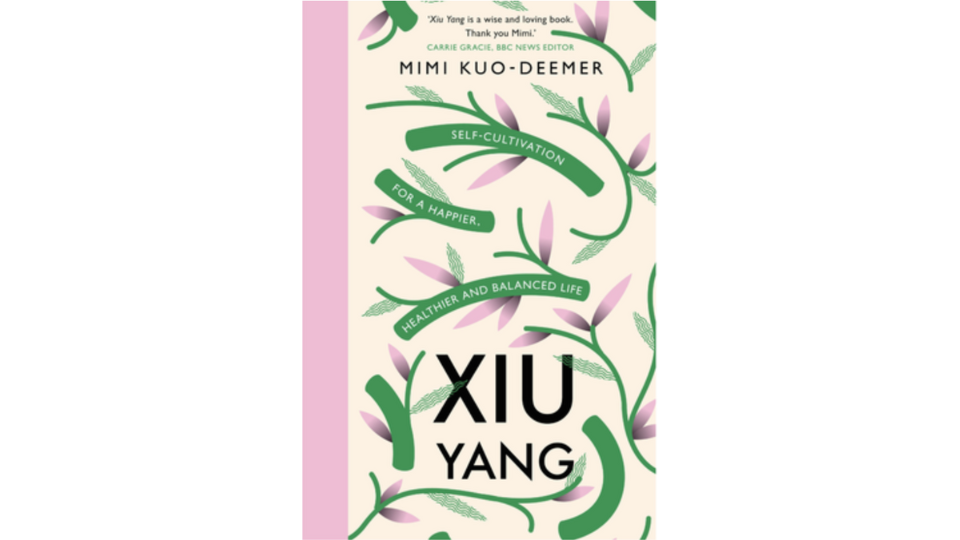
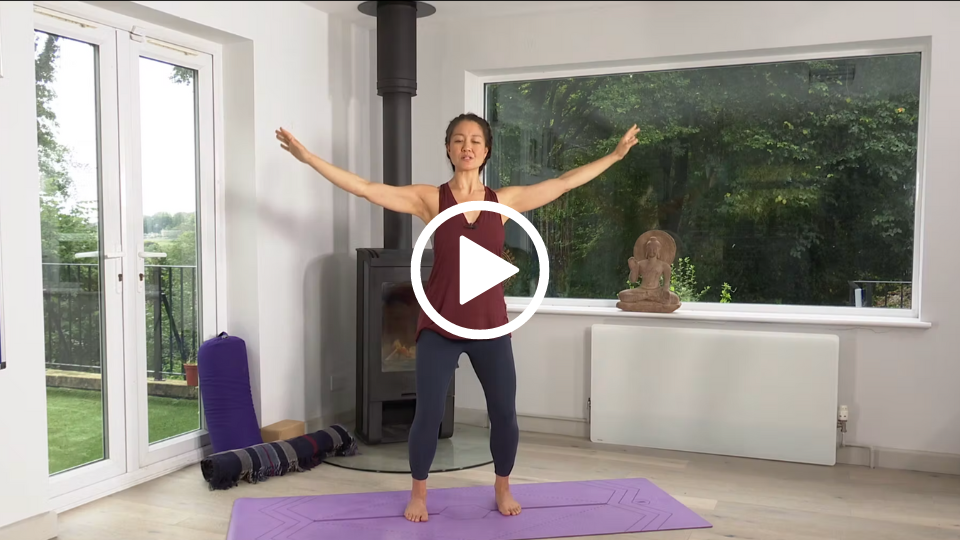
3. Yin Yoga Challenge
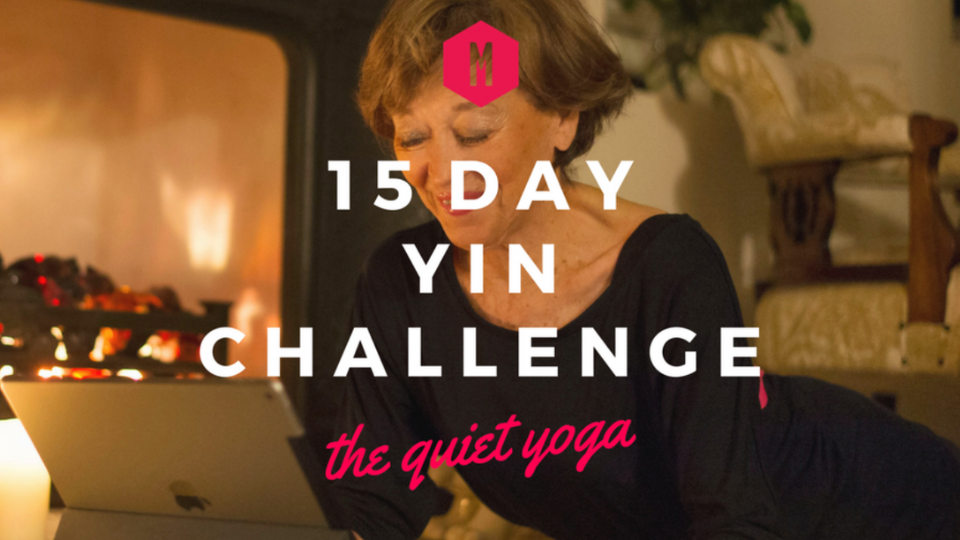
Try the Yin Yoga Challenge to introduce more soft, gentle practices to your daily yoga.
When going through menopause, especially perimenopause, the body need to unwind from the internal and external stressors. Yin yoga is a great tool for that.
Other Resources:
- Kate Codrington – Read her book ‘Second Spring: The self care guide to menopause’
- The Red School – Read their new book ‘Wise Power’
- MPowder – a great place for menopause supplements
- The Menopause Charity – A fabulous charity raising awareness and supporting women
- Movement for Modern Life Facebook Page – a great place to connect with others going through menopause, to ask advice, share stories and increase awareness.
- Recorded live talks on the Menopause for Modern Life Facebook Page
- Diane Danzebrink – Menopause support
- Read ‘Nutritional Support for Menopause by Lindsey Whistler
Read more in Yoga for Stress and Anxiety: A Complete Guide
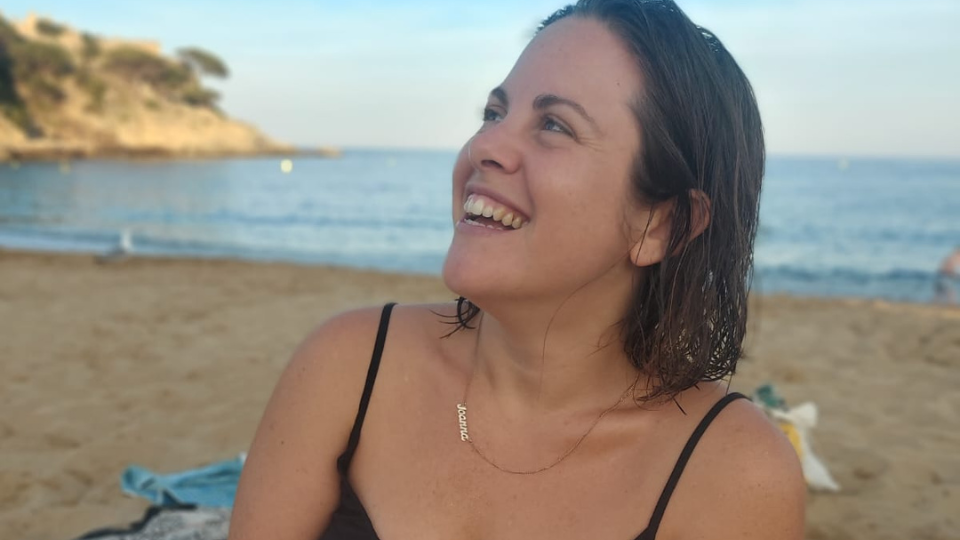
Written by Joanna Gilbert – Joanna originally trained in Frog Lotus Vinyasa Flow with Vidya Heisel in 2015 and since then has been discovering new ways to connect to her body. Joanna is passionate about combining mindful-movement, with play, and self exploration.
When not playing she can be found working behind the scenes with MFML as the chief Happiness Maven!
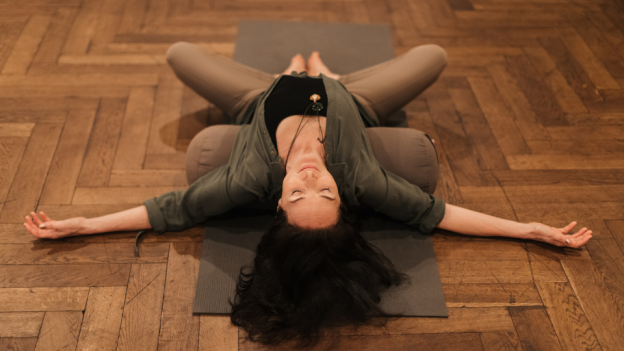





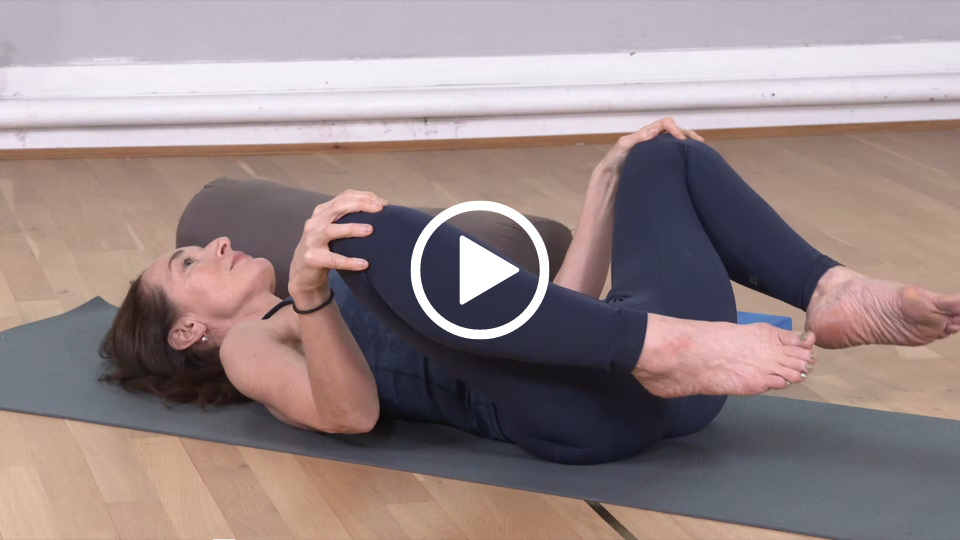




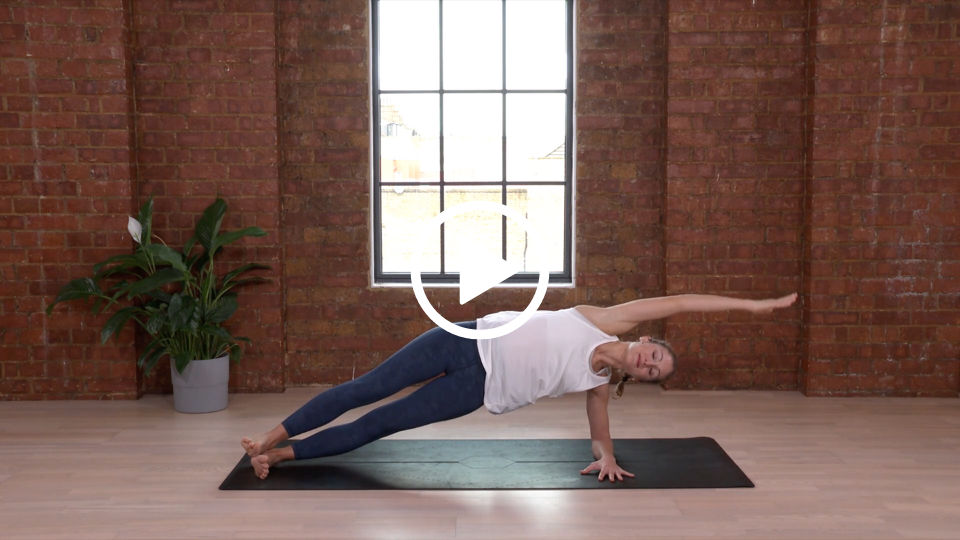
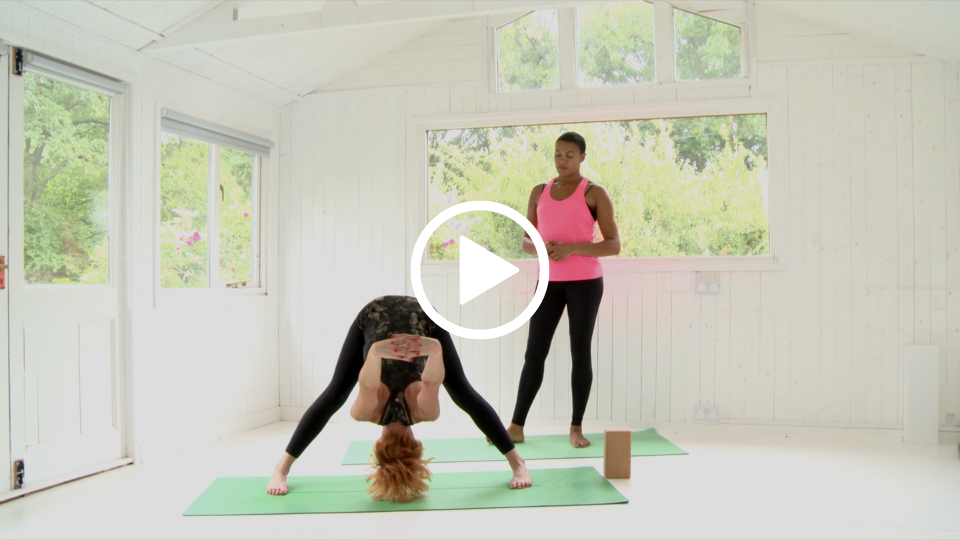

Pingback: Yoga for Menopausal Women: Harnessing Inner Balance for Anti-Aging - Anti-Aging Alchemy